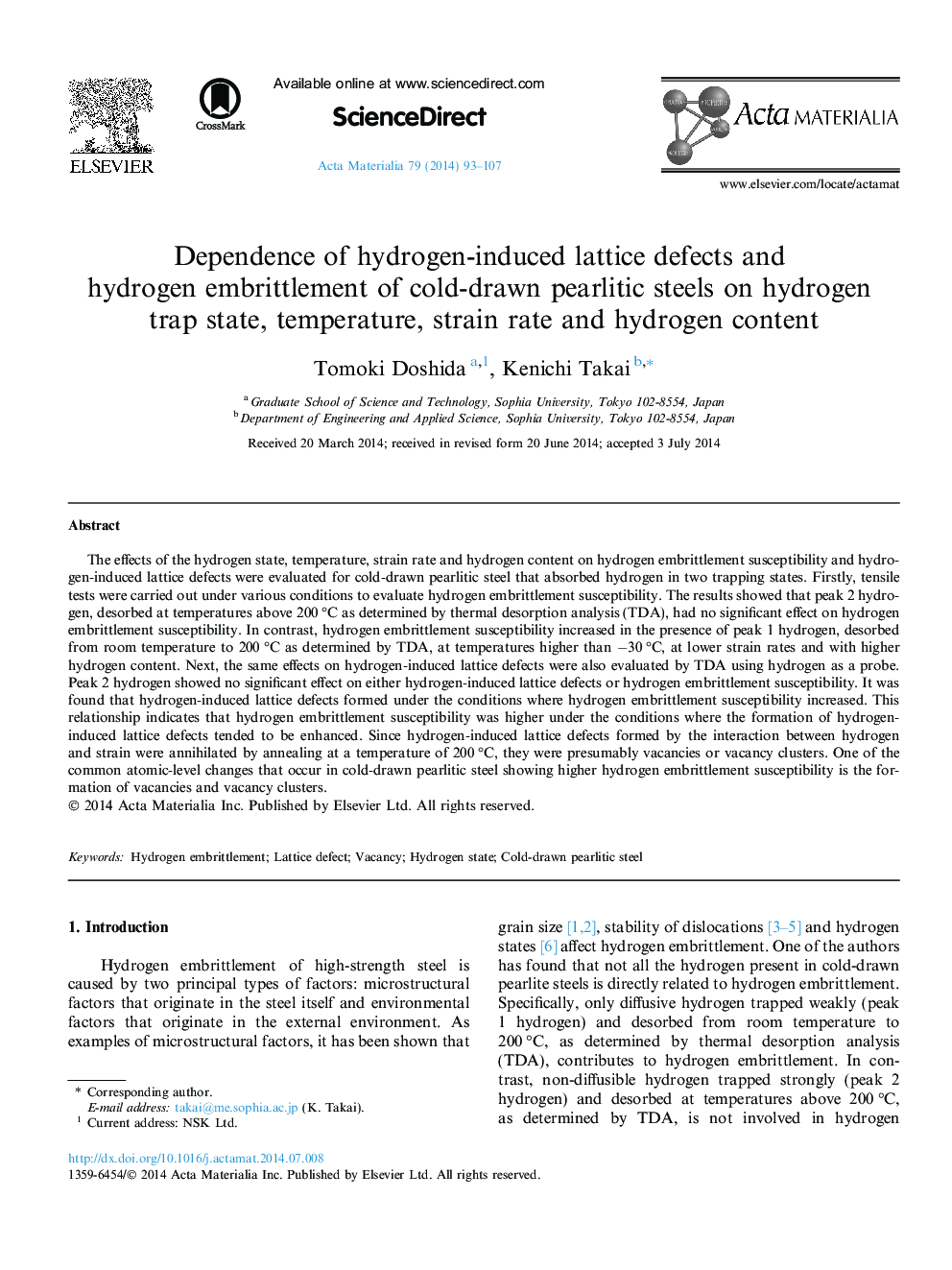| کد مقاله | کد نشریه | سال انتشار | مقاله انگلیسی | نسخه تمام متن |
|---|---|---|---|---|
| 7881027 | 1509597 | 2014 | 15 صفحه PDF | دانلود رایگان |
عنوان انگلیسی مقاله ISI
Dependence of hydrogen-induced lattice defects and hydrogen embrittlement of cold-drawn pearlitic steels on hydrogen trap state, temperature, strain rate and hydrogen content
ترجمه فارسی عنوان
وابستگی نقائص شبکه ای ناشی از هیدروژن و ضعف هیدروژنی فولاد پرلیتیک سرد بر تریپ هیدروژن، دما، سرعت فشار و مقدار هیدروژن
دانلود مقاله + سفارش ترجمه
دانلود مقاله ISI انگلیسی
رایگان برای ایرانیان
کلمات کلیدی
هراس هیدروژن، نقص شبکه جای خالی، دولت هیدروژن، فولاد مروارید سرد براق
موضوعات مرتبط
مهندسی و علوم پایه
مهندسی مواد
سرامیک و کامپوزیت
چکیده انگلیسی
The effects of the hydrogen state, temperature, strain rate and hydrogen content on hydrogen embrittlement susceptibility and hydrogen-induced lattice defects were evaluated for cold-drawn pearlitic steel that absorbed hydrogen in two trapping states. Firstly, tensile tests were carried out under various conditions to evaluate hydrogen embrittlement susceptibility. The results showed that peak 2 hydrogen, desorbed at temperatures above 200 °C as determined by thermal desorption analysis (TDA), had no significant effect on hydrogen embrittlement susceptibility. In contrast, hydrogen embrittlement susceptibility increased in the presence of peak 1 hydrogen, desorbed from room temperature to 200 °C as determined by TDA, at temperatures higher than â30 °C, at lower strain rates and with higher hydrogen content. Next, the same effects on hydrogen-induced lattice defects were also evaluated by TDA using hydrogen as a probe. Peak 2 hydrogen showed no significant effect on either hydrogen-induced lattice defects or hydrogen embrittlement susceptibility. It was found that hydrogen-induced lattice defects formed under the conditions where hydrogen embrittlement susceptibility increased. This relationship indicates that hydrogen embrittlement susceptibility was higher under the conditions where the formation of hydrogen-induced lattice defects tended to be enhanced. Since hydrogen-induced lattice defects formed by the interaction between hydrogen and strain were annihilated by annealing at a temperature of 200 °C, they were presumably vacancies or vacancy clusters. One of the common atomic-level changes that occur in cold-drawn pearlitic steel showing higher hydrogen embrittlement susceptibility is the formation of vacancies and vacancy clusters.
ناشر
Database: Elsevier - ScienceDirect (ساینس دایرکت)
Journal: Acta Materialia - Volume 79, 15 October 2014, Pages 93-107
Journal: Acta Materialia - Volume 79, 15 October 2014, Pages 93-107
نویسندگان
Tomoki Doshida, Kenichi Takai,
